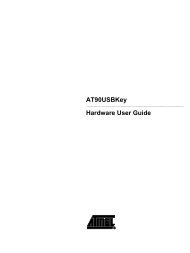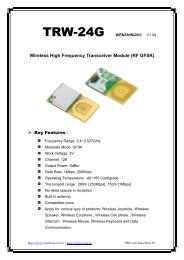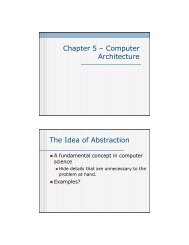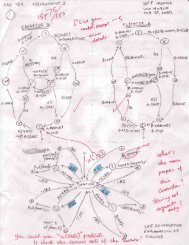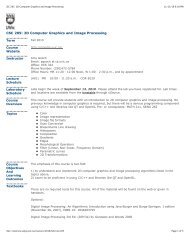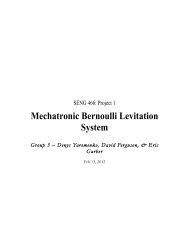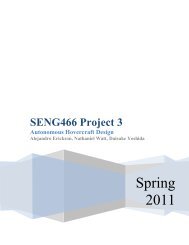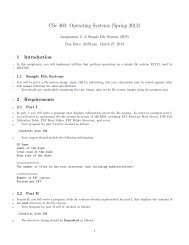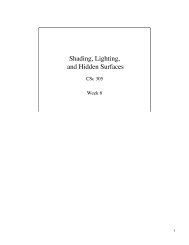Icon - Department of Computer Science - University of Victoria
Icon - Department of Computer Science - University of Victoria
Icon - Department of Computer Science - University of Victoria
You also want an ePaper? Increase the reach of your titles
YUMPU automatically turns print PDFs into web optimized ePapers that Google loves.
Figure 5.7: When the handle vertex (hv) is translated with T1, the vertices in the red<br />
circle are influenced. The same thing happens with T2.<br />
Experimentation with other functions is left for future work.<br />
5.3.2 Deformation Field Construction<br />
A deformation field D is now computed which can be applied to any point inside<br />
the voxel grid by interpolating the translations Tvi at each vertex vi. The deformed<br />
position q if a point p is in D is defined:<br />
42<br />
q = p + D(p) (5.5)<br />
This deformation can be applied to point based representations such as a polygon<br />
mesh as shown in Figure 5.8a because a set <strong>of</strong> points p ∈ R 3 are explicitly defined<br />
to represent a surface. On the other hand, implicit surfaces are not defined as a set<br />
<strong>of</strong> points, but by an arbitrary scalar function f. Since a deformation field D takes<br />
a point p ∈ R 3 as input, D cannot be applied to a scalar function f. To evaluate<br />
an implicit surface, it is necessary to calculate the field values at a large number <strong>of</strong><br />
sample points. Instead <strong>of</strong> deforming f, therefore, the sample points are displaced to<br />
the scalar field by applying an inverse deformation. In Figure 5.8b, when a point q<br />
is evaluated, q is displaced to p with the inverse deformation field D and then f(p)<br />
is returned as the field value <strong>of</strong> q. Hence, deformation <strong>of</strong> an implicit surface can be<br />
defined by constructing an inverse deformation field D which approximates D −1 .



